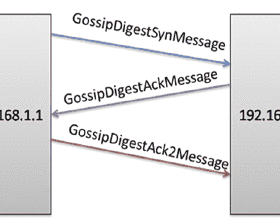The gossip-based distributed algorithms are widely used to solve decentralized optimization problems in various multi-agent applications, while they are generally vulnerable to data injection attacks by internal malicious agents as each agent locally estimates its decent direction without an authorized supervision. In this work, we explore the application of artificial intelligence (AI) technologies to detect internal attacks. We show that a general neural network is particularly suitable for detecting and localizing the malicious agents, as they can effectively explore nonlinear relationship underlying the collected data. Moreover, we propose to adopt one of the state-of-art approaches in federated learning, i.e., a collaborative peer-to-peer machine learning protocol, to facilitate training our neural network models by gossip exchanges. This advanced approach is expected to make our model more robust to challenges with insufficient training data, or mismatched test data. In our simulations, a least-squared problem is considered to verify the feasibility and effectiveness of AI-based methods. Simulation results demonstrate that the proposed AI-based methods are beneficial to improve performance of detecting and localizing malicious agents over score-based methods, and the peer-to-peer neural network model is indeed robust to target issues.
翻译:以八卦为基础的分布式算法被广泛用于解决多种试剂应用中的分散优化问题,而一般而言,它们很容易受到内部恶意行为主体的数据注入攻击,因为当地每个代理商在没有授权监督的情况下估计其体面的方向。在这项工作中,我们探索了人工智能技术的应用,以探测内部攻击;我们表明,一般神经网络特别适合检测恶意行为主体并使其本土化,因为它们能够有效地探索所收集数据背后的非线性关系。此外,我们提议采用最先进的联合学习方法之一,即合作的对等机器学习协议,以便利通过八卦交流培训我们的神经网络模型。这一先进方法有望使我们的模型更加强大,应对培训数据不足或测试数据不匹配的挑战。在我们模拟中,一个最不常见的问题被认为是核实基于AI的方法的可行性和有效性。模拟结果表明,拟议的基于AI的方法有利于改进对基于分数的方法进行检测和本地化的恶意行为主体性能,而同行神经网络模型对于目标问题确实非常可靠。





